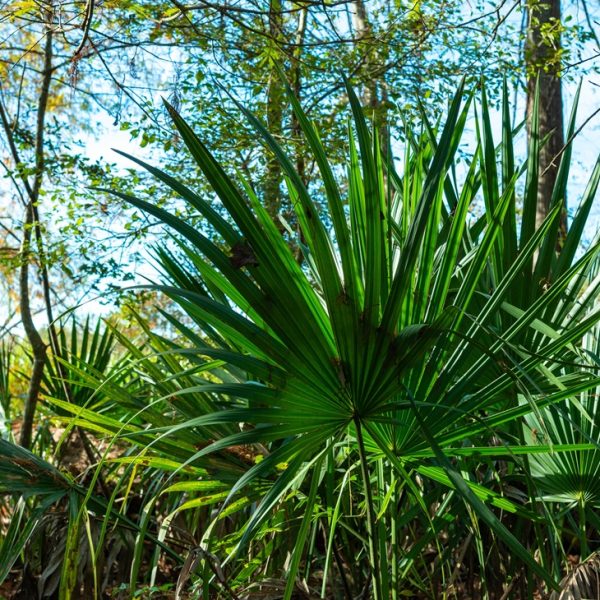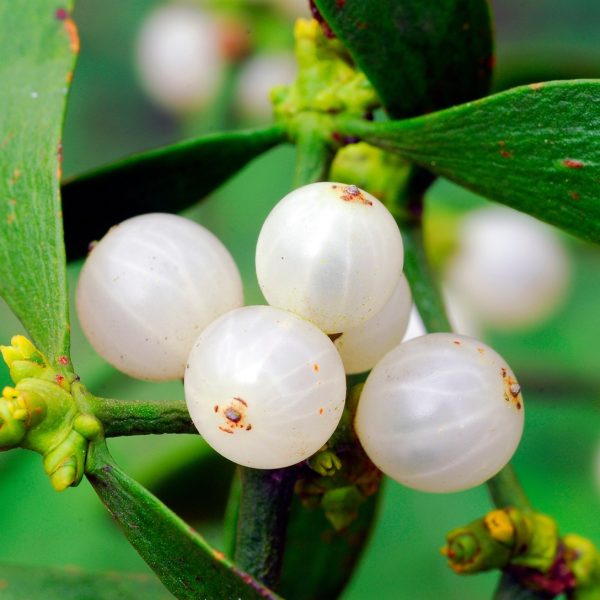Menopause is a period of transition accompanied by physical and emotional changes. Understand how to support this time using Ayurvedic principles and herbs.
Understanding menopause: The Ayurvedic view of the menopause

Menopause is not mentioned in classic Ayurvedic texts, which suggests that Indian women living a more natural lifestyle experienced fewer symptoms in earlier times. While this may be true, one can also say the main focus was on the promotion of fertility and healthy pregnancy. However, Ayurveda has very successful treatments for the alleviation of menopausal symptoms to support this natural transition experienced by all women.
In conventional medicine, menopause is treated as a ‘long term hormonal deficiency’, however menopause isn’t an illness but a natural transition for us to be attuned to. The accepted definition of menopause is the day that a woman has not had a period for 12 months. Post-menopause starts the day after menopause. Perimenopause is the time leading up to menopause when hormonal changes start to occur, resulting in mood, physical and menstrual cycle changes. Women usually start to notice these changes during their 40s, although they can happen earlier.
Ayurveda offers a way to predict specific signs and symptoms based on dosha imbalances during the transition. For example, if vata dosha (air and ether elements) is high, there will be more dryness. If pitta (fire and water) is high, more heat related symptoms will be experienced. What is clear is that the more balanced a woman is entering this life junction, the smoother the transition will be. For a woman to get the most out of this time, she needs perspective and preparation.
How does menopause work?
Different stages of life are deeply influenced by each of the three doshas in Ayurveda, and the junctions when they shift is seen as a time of flux . At menopause, a woman is considered to be moving from her years of achieving and accomplishment (dominated by pitta dosha) to a new era of clarity, insight and wisdom as vata dosha starts to dominate. As vata also has a dispersing nature, the traditional role of women was to share insights and wisdom with society. If a woman has been busy running a household, family and career, menopause offers a time to take a deep breath and allow awareness to shift inwards, then share her newfound wisdom.

A gradual cessation of menstruation or a lengthening of the time between each period is the primary signal for menopausal onset. It naturally occurs anywhere between the mid-thirties to mid-fifties, but typically between the ages of 45–55. Ina woman younger than 40 showing symptoms, a diagnosis of premature ovarian insufficiency (POI) may be given. Clinical confirmation that a woman is experiencing menopause can be achieved through the results of hormone assays. Postmenopausal women have elevated levels of serum follicle stimulating hormone (FSH) and serum luteinising hormone (LH).
FSH and LH are essential hormones in the female reproductive system, helping to regulate and stimulate ovarian cycles through feedback mechanisms to the ovaries and the hypothalamus. Peri-menopausal women are women who have begun to move from the reproductive to the non-reproductive stage and are experiencing menstrual irregularity and symptoms such as hot flushes and sweating. During this stage, levels of FSH have increased. As the menopause progresses into the perimenopausal stage, FSH levels continue to rise, and LH also begins to increase until both hormone levels are well elevated past their typical values.
Oestrogen is a catabolic sex hormone with a wide range of roles and influences, including reproduction, digestion, mood, fat metabolism, fluid ratios, skin pigmentation and breaking down muscle mass. Testosterone, and to a slight degree progesterone, are anabolic sex hormones that promote lean body mass.
The outcome of menopause is low oestrogen and progesterone levels, which can cause the uncomfortable symptoms of menopause. More serious health conditions can also affect postmenopausal women who show a rapid loss of bone density (osteoporosis) and no longer have the pre-menopausal protection from ischaemic heart disease due to hormonal changes.
In conventional medicine, menopause is treated with hormone replacement therapy (HRT), consisting of oestrogen and, most commonly, also progesterone. Testosterone may also be given for reduced sex drive (1). There have been decades of controversy regarding HRT, the prescription of which was reduced after clinical research linked it with an increased risk of cardiovascular disease, breast cancer, stroke and thromboembolic disease (2). However, in 2024, the WHI researchers published 20 years of follow up data, which showed no increase in deaths from breast cancer or cardiovascular disease, along with a decrease in all-cause mortality when HRT was started under age 60 or less than 10 years after the final menstrual period (3). Key findings show how to individualise HRT for each woman’s situation, such as making sure women start HRT at the right age, and that the treatment is administered in the appropriate form. Reduced risk of osteoporosis, bone fracture, colorectal cancer and cardiovascular disease are also cited (4).
However, despite such shifts in the research paradigm, HRT is not suitable for many women. This includes those with a history of breast cancer, oestrogen-dependent cancer, deep vein thrombosis or pulmonary embolism, angina or myocardial infarction and active liver disease with abnormal liver function tests (1). Many women not experiencing these issues may also choose to explore the herbal route of support out of personal preference.
Common symptoms in menopause
The alteration in the hormonal balance often results in symptoms, such as (5):
- Changes to mood including low mood, anxiety, mood swings and low self-esteem
- Problems with memory or concentration (brain fog)
- Hot flushes, with sudden feelings of hot or cold in the face, neck and chest accompanied by potential dizziness
- Difficulty sleeping, which may be a result of night sweats
- Palpitations
- Headaches and migraines that are worse than usual
- Muscle aches and joint pains
- Altered body shape and weight gain
- Skin changes including dry and itchy skin
- Reduced sex drive
- Vaginal dryness and pain, itching or discomfort during sex
- Recurrent urinary tract infections (UTIs)
- Sensitive teeth, painful gums or other mouth problems
From the Ayurvedic perspective, symptoms can be grouped according to which dosha is most aggravated as follows:
- Vata: Irregular cycles, mood swings, poor concentration, nervousness, anxiety, memory loss, insomnia, constipation, reduced bone density, dry skin and mucous membranes (including vagina), lowered libido and hot and cold flushes
- Pitta: Heavy bleeding during perimenopause, anger, high blood pressure, excessive irritability, headaches, skin rashes, digestive upset, heat and burning, sensations and hot flushes.
- Kapha: Weight gain, fluid retention, depression, lethargy and feelings of mental and physical heaviness
Ayurvedic herbs for menopause

Aloe vera
Aloe vera (Aloe vera) is cooling, nourishing and anti-inflammatory. The gel and juice are a wonderful tonic for the female reproductive system. It is a sweet bitter that helps to nourish dry mucous membranes and clear inflammatory heat from the body. Its high polysaccharide content heals mucous membranes and calms inflammation and irritation, so it is especially helpful with more pitta dosha related symptoms.
Ashoka
Ashoka (Saraca ashoka) means ‘remover of sorrow’, attesting to its ability to remove pain and discomfort. Its potent haemostatic quality makes it a first port of call for any excessive uterine bleeding, or other forms of discharge. Its bitter and astringent flavour points to its cooling and dry qualities that help tone the uterus and treat prolapse, giving strength and form where that has been lost. It is a renowned garbhashaya rasayana, rejuvenating the uterus and reproductive system along with supporting dysmenorrhea and pain. Its ability to clear ama congestion from arthava srotas make ashoka valuable in treating cysts, fibroids and endometriosis that may accompany menopause.
Ashwagandha
Ashwagandha (Withania somnifera) has been used for thousands of years in Ayurveda to nourish the mind and enhance vigour through being a rejuvenative rasayana. It is both an adaptogen and tonic — calming the stress response and building energy so it is especially helpful with more vata dosha related symptoms. It particularly supports restorative sleep.
These properties make it an ideal support for women going through what can be considered as a ‘second puberty’ with all the physical and emotional change that entails. Ashwagandha is also used in any menstrual imbalances seen in perimenopause, caused by a deficient condition with an aggravation of vata and uterine spasms including dysmenorrhoea, amenorrhoea and weakness.
Gokshura
Gokshura (Tribulus terrestris) has mild, sweet and bitter properties which help balance all three doshas and the entire system. It has a unique ability to both remove stagnant fluids and moisten dryness. Its spiky thorns symbolise its ability to scrape out obstructions, so use it whenever vata, pitta or kapha are blocking the pelvis and interfering with menstruation. It is helpful for dysmenorrhoea, amenorrhoea or menstrual irregularity. Gokshura, whether for its potent steroidal saponins or its sweet rasayanic quality, is a remarkable tonic, bringing strength, rejuvenation and replenishing libido.
Liquorice
Liquorice (Glycyrrhiza glabra) strengthens and supports the nervous system and adrenal glands through the production of constituents that mimic those found in the adrenal cortex. It modifies the body’s own stress response to prevent the onset of adrenal exhaustion and exerts a tonifying effect throughout the body. It has an affinity for the endocrine system, exerting a rejuvenative effect and helping with menstrual and menopausal issues.
Rose
Rose (Rosa centifolia / Rosa x damascena) has a naturally cooling and anti-inflammatory effect when used internally and externally, making it suited for hot and irritated conditions. Its petals are astringent, helping to stop bleeding and reduce inflammation. It clears heat from the uterus and blood and is used in dysmenorrhoea, metrorrhagia, endometriosis and fibroids.
Rose acts as a nervine by calming and relaxing the nervous system, with a particular impact upon the heart as an organ relieving emotional and physical tension. It can also help to alleviate PMS symptoms associated with irritability, emotional sensitivity and heat. It can also enhance libido and fertility. Its cooling and drying qualities have made rosewater an excellent solution for menopausal hot flushes.

Sage
Sage (Salvia officinalis) is a deeply nourishing and restoring tonic for the nervous system, digestive tract and cognitive organs. One of the most renowned traditional uses of sage is to reduce excessive perspiration. As a result, it has become very popular for use during menopause. Sage is also supportive for short-term or intermittent use during menopause for helping to improve mood and cognitive function. Sage also has several uses in herbal medicine for the treatment of female reproductive conditions. Its astringent effects on the uterine tissues make it specific for heavy and painful menstruation.
Shatavari
Shatavari (Asparagus racemosus) is a renowned women’s tonic, containing natural pre-precursors to hormones that help reduce menopausal symptoms. Shatavarin and sarsapogenin are two key constituents responsible for its oestrogenic activity but are not phyto-oestrogens. It also contains steroidal glycosides with a strong anti-inflammatory effect in the urinary, reproductive and digestive systems. Its mucilaginous nature makes it an excellent remedy for hot, dry and irritated mucous membranes, including vaginal dryness.
It is also classed as an adaptogen and contains a proportion of immune stimulating polysaccharides, making it nutritive and tonifying to a weakened immune system exacerbated by stress. It has also shown great promise in strengthening muscle function in postmenopausal women, as part of a healthy aging regimen specifically to enhance resistance training, or for sarcopenic populations (6).
Triphala
Triphala is one of Ayurveda’s most famous formulas for clearing obstructions. It draws stagnating toxins out of the tissues to be eliminated naturally and can be of great digestive support during menopause. Addressing constipation will reduce sluggishness in the pelvic region which affects the cycle and can worsen any perimenopause symptoms.
A clinical study has demonstrated that herbal treatment improved menopausal symptoms, particularly hot flushes and low libido (7). It suggests that herbal treatment could be considered a valid treatment choice for women. More research in this area could lead to the recommendation of specific herbal therapeutic approaches by the National Institute of Clinical Excellence (NICE). This could be of great benefit to those who are not helped by currently funded medical approaches to managing menopause. This study also shows there is an herbal option which GPs could consider when advising women suffering from menopausal symptoms for whom hormone replacement therapy is contraindicated for clinical reasons or by choice.
Please note: If you are not getting relief with these remedies, consult your doctor or your Ayurvedic practitioner. If there are any serious underlying health conditions or if one is taking pharmaceuticals, it is important to check for interactions. It is always best to consult a qualified clinical herbalist or doctor.
Diet and lifestyle to support menopause

Dietary support
Foods and herbs that balance oestrogen
A 2018 study looked at how diet influenced the age of menopause and found a high intake of oily fish and fresh legumes was associated with a significantly later onset of natural menopause (8). Refined pasta and rice were associated with earlier menopause, supporting recommendations mentioned below
- Cruciferous vegetables such as broccoli, cauliflower, brussel sprouts and cabbage contain several powerful nutrients that help metabolise oestrogenic molecules. They also contain sulfur containing nutrients such as Sulfurophane that enhance liver detoxification processes and destroy cancer cell formation. Broccoli sprouts 50–100g/day are a good way to get this.
- Alliums including garlic, onions, scallions, chives and leeks are all rich in sulfur-containing amino acids and the powerful flavone antioxidant quercetin that help the liver detoxify and reduce the production of oestrogen.
- Healthy fats are rich in saturated and omega-3 fatty acids. Favour plant-based fats such as coconut oil, extra virgin olive oil and avocados. Hemp seed oil (Cannabis sativa) is especially recommended, as it is full of Omega 3-6-9 essential fatty acids and nourishes the body’s mucous membranes. Omega 3 also helps to create prostaglandins, which can reduce water retention and normalise hormone levels. Raw nuts (besides peanuts) and seeds contain oestrogen balancing plant sterols. Organic poultry, wild-caught salmon, wild game and 100% grass-fed beef are the best animal fats for healthy hormone function.
- Legumes such as lentils, tofu and tempeh contain phytoestrogens that help balance oestrogen and progesterone levels. Soy is already well known for its phytoestrogenic action, but all pulses have an effect on hormone levels.
- Mushrooms also regulate oestrogen levels. Use shitake (Letinula edodes), maitake (Grifola frondosa), button and cep (Boletus edulis) mushrooms.
- Fibre binds to hormones in the gut and encourages elimination. So, aim for plenty of vegetables and other whole plant foods: beans, lentils and chickpeas, easy-to-digest grains such as oats and brown rice, and nuts and seeds.
- Antioxidant rich herbs include oregano (Origanum vulgare), thyme (Thymus vulgaris), rosemary (Salvia rosmarinus), sage (Salvia officinalis) and turmeric (Curcuma longa) are rich in volatile oils that promote liver detoxification. Turmeric also has a potent ability to destroy oestrogen receptor-positive cancer cells, which are commonly found in breast, uterine, ovarian and prostate cancer.
- Chlorophyll is one of the most potent and life-giving substances on the planet, giving green foods their colour. Chlorophyll-rich foods have a deep green colour and they are extraordinarily useful in purifying the body of toxins.
- Fermented foods contain organic acids, antioxidants, enzymes and probiotics that enhance gut function and eliminatory channels. These include sauerkraut, kimchi and fermented soy.
- Lignans: Using two tablespoons of freshly-ground flaxseed everyday helps to establish a healthy oestrogen balance.
- Herbal teas: Green tea and liquorice (Glycyrrhiza glabra) specifically help balance oestrogen levels.
A few things to minimise:
- Heavy, difficult-to-digest foods which can put pressure on the liver, a key organ in maintaining hormonal health.
- Hot spices, greasy food, very cold foods
- Snacks and drinks with a high sugar content and refined carbohydrates as blood sugar fluctuations can directly trigger hot flushes.
- Coffee increases blood pressure, heart rate and dilates the peripheral skin vessels and hence encourages sweating
- Alcohol dilates the peripheral blood vessels and encourages sweating.
Ayurveda lifestyle suggestions in menopause
- Adequate rest and sleep are essential, as well as managing stress. In times of stress, a woman’s body will divert resources from creating sex hormones to stress hormones (adrenalin and cortisol). Women often notice that the surge of adrenaline caused by stress can directly trigger some of the unpleasant symptoms of perimenopause, such as hot flushes and irritability. Manage stress with plenty of rest and practices such as yoga and meditation. Additionally, now is the time to explore paths to deep inner peace.
- Ayurvedic oil massage can be beneficial in supporting both perimenopause and menopause. Try a regular self-massage or professional massage with warm oil to increase circulation, calm vata, and the nervous system and prevent dry skin. The beauty of an Ayurvedic self-massage is that it will only take around 20 minutes and costs nothing. Use cold-pressed, organic oils such as sesame oil.
- Daily exercise is crucial for managing menopause and beyond, preventing weight gain, lowering stress levels and improving mood. Aerobic exercise is ideal, but strength training should be included to support muscle mass and bone density. Strength training can include weight training, strength-based exercise classes or specific bodyweight exercises.
- Vaginal douching with herbs such as triphala, shatavari (Asparagus racemosus), aloe vera, raspberry leaf (Rubus idaeus), rose (Rosa spp.) and liquorice which make a cleansing or nourishing decoction. Of all Ayurveda’s extensive treatments, this is seen as the single most essential practice for women, from menarche to menopause and beyond (9). With proper guidance, this is a simple self care practice to use at home.
- Vaginal steaming (yoni steaming) involves a woman sitting or squatting over steaming water containing herbs such as those listed above. From the Ayurvedic perspective, steam has the qualities of being hot, subtle and spreading. Adding different herbs can enhance these properties for use during peri and menopause. This is not recommended during your period or pregnancy. With proper guidance, this is another simple self care practice that can be done at home.
Cycle awareness around the menopause transition
Women have a clear monthly rest-activity-rest cycle that aligns with the menstrual cycle. In recent years, there have been fascinating developments in viewing the menstrual cycle as a self care tool to support women, which can be of great help during perimenopause when women are still cycling. A leading voice is The Red School who talk about the new concept of ‘menstruality’: Framing a woman’s cycle as a potential guide to emotional and spiritual empowerment. This approach can help manage menopause as both a phase of transformation and empowerment (10). For example, now is the time for women to pull away from the world as something is ending.
Women may notice their interest in things starts to fade, with a growing gap between them and the world. It is perfectly normal to feel less interested in children, or partners as women honour the need to be with themselves and rest more. The invitation is to just ‘tick over’ for a time and not take on anything stressful if possible. Freeing up some time and energy in this way helps women reflect how best they can emerge into a rich and meaningful post menopausal life. This aligns with the Ayurvedic view of women moving from a time of achievement and accomplishment to a new era of clarity, insight and wisdom which the whole of society could benefit from.
References
- NICE. Hormone replacement therapy. NICE. Published September 2022. https://cks.nice.org.uk/topics/menopause/prescribing-information/hormone-replacement-therapy-hrt/
- McDonough PG. The randomized world is not without its imperfections: reflections on the Women’s Health Initiative Study. Fertility and Sterility. 2002;78(5):951-956. doi: https://doi.org/10.1016/s0015-0282(02)04403-5
- Brock S. Menopause Hormone Therapy is Making a Comeback: Is it Safe and Right for You? |. Lifestyle Medicine. Published March 6, 2025. Accessed March 17, 2025. https://longevity.stanford.edu/lifestyle/2025/03/06/menopause-hormone-therapy-is-making-a-comeback-is-it-safe-and-right-for-you/
- Manson JE, Crandall CJ, Rossouw JE, et al. The Women’s Health Initiative Randomized Trials and Clinical Practice. JAMA. Published online May 1, 2024. doi: https://doi.org/10.1001/jama.2024.6542
- NHS. Symptoms – Menopause. NHS. Published May 17, 2022. https://www.nhs.uk/conditions/menopause/symptoms/
- O’Leary MF, Jackman SR, Sabou VR, et al. Shatavari Supplementation in Postmenopausal Women Improves Handgrip Strength and Increases Vastus lateralis Myosin Regulatory Light Chain Phosphorylation but Does Not Alter Markers of Bone Turnover. Nutrients. 2021;13(12):4282. doi: https://doi.org/10.3390/nu13124282
- Green J, Denham A, Ingram J, Hawkey S, Greenwood R. Treatment of menopausal symptoms by qualified herbal practitioners: a prospective, randomized controlled trial. Family Practice. 2007;24(5):468-474. doi: https://doi.org/10.1093/fampra/cmm048
- Dunneram Y, Greenwood DC, Burley VJ, Cade JE. Dietary intake and age at natural menopause: results from the UK Women’s Cohort Study. Journal of Epidemiology and Community Health. 2018;72(8):733-740. doi: https://doi.org/10.1136/jech-2017-209887
- Tiwari M. Women’s Power to Heal : Through Inner Medicine. Mother Om Media; 2016.
- Red School. About | Red School. Redschool.net. Published 2020. Accessed March 17, 2025. https://www.redschool.net/about































